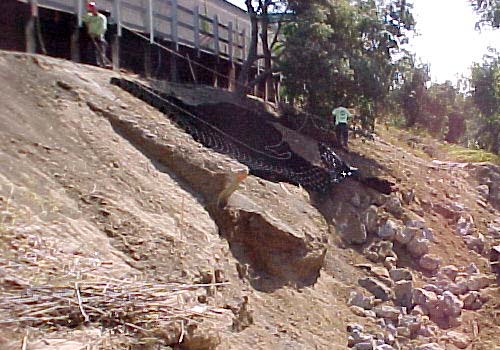Erosion Control Toolbox: Cellular Confinement System
Introduction


This treatment consists of a geotextile material with cells that can be fastened to the slope with anchor pins. The cells are between 4'' - 8'' deep and can be backfilled with Local Topsoil and vegetated. This approach provides greater soil volume than traditional hydroseeding, and provides improved establishment of long-term, sustainable vegetation.
When to Use This Treatment
- Cut slopes that are 1.5:1 (H:V) and flatter
- Coordinate the use of this technique with the Division of Engineering Services (DES) Office of Geotechnical Services, which may prepare a Geotechnical Design Report for slopes greater than 2:1 (H:V)
- Use of Cellular Confinement in a stream or channel below the 100-year base flood elevation will be determined by the responsible charge Engineer. Planting or incorporation of seed proposed by the Landscape Architect in conjunction with the Cellular Confinement will be evaluated by the responsible charge Engineer.

Benefits
- Provides immediate slope reinforcement from unrooted brush cuttings and horizontal geosynthetics
- As roots develop, improves slope stability and shear resistance by creating a rooting matrix
- Creates a vegetative filter
- Increases infiltration on dry sites
- Provides for vegetation establishment, cover and natural recruitment
Limitations
- Must have solid footing to be successful
- Cost effectiveness is highly dependent upon site specific application
Consider Using With
To effectively treat sites with poor soils (compacted, sterile or poorly draining), consider combining this treatment with:
- Local Topsoil
- Incorporate Materials
- Compost
References
- Caltrans Erosion Control New Technology Report, Topsoiling With Cellular Confinement, June 2003
- Caltrans Division of Environmental Analysis Stormwater Program, "Cellular Confinement System Research"
Updated: February 11, 2019

